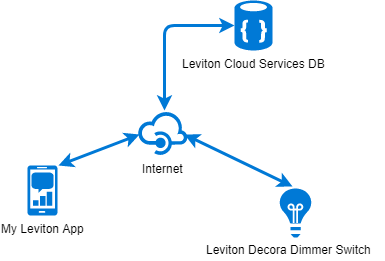We agree on a lot of points and I have to disagree with you on some of these points too. This would be the reason there isn't a rock solid one standard fits all wireless protocol. 
I agree, Google does not have a good track record at keeping services going. It does make me uneasy at times because I love me Google Assistant Relay capability with HE so much. It's literally the bridge that has delivered so much capability that I never had access to outside of IFTTT or Stringify (when I was still a ST user) before now. But it works today, the investment is time building the node server. I did it in an hour, but it might take longer depending on your experience level. I run mine on an old MacBook laptop that I run other node.js applications on, but a raspberry pi will work just as well, so not a big investment there.
I did the add Google Assistant to Echo thing too, but it was much harder, more confusing to setup, unreliable, and cost me money when it quickly exceeded my free limit on Amazon. Contrast that to just buying a $35 mini and setting it next to my Echo. For dual voice assistants, that was the smarter choice. I also recently got a second one for free too.
Zigbee is more likely to succeed and evolve into some other communications technology. Even Amazon has realized that WiFi alone wasn't doing it for everyone, so they introduced the Echo Plus with Zigbee. But I don't think they're convinced it's the be all, end all. Z-Wave is complicated to setup and maintain, different frequencies in most countries (unlike Zigbee), and doesn't self heal. Your woes have been related to a lack of Zigbee and Z-Wave repeaters, and possibly not a clear understanding of how the technologies work. That's not a criticism of you, it is a criticism of how that has developed. Even IKEA now offers dedicated repeaters to their customers trying to get into home automation with the Trådfri devices. But how do you explain to someone that has no idea about this stuff, that they need this repeater and why. And how do you do it will a drawing of a guy that looks like he just asked Mr. Owl how many licks it takes to get to the Tootsie roll center of a Tootsie Pop? 
WiFi devices are a star topology, no matter if you have WiFi mesh or not. I don't agree that WiFi mesh is common. It's still maturing, the technology is just barely ratified to a spec that no one currently follows and 9 out of 10 people I've talked to have never heard of it. I've argued that it can make WiFi range less of a problem, but it certainly doesn't change the device limits or the noise that these devices chatting away on the network causes.
You and I both live in free, capitalist societies, where standards are build by committees and the bottom line. In places like China where decision can be made from the top down, things might evolve differently and that's likely to be an influencer, solely because of the volumes and supply chains. Hubitat is just over a year old. They have to keep the lights on and you do that by appeasing the enthusiasts like me and then they help the new users, and the company/product evolve as it makes sense. If they were to just develop another cloud only hub, I'm pretty sure they'd be closing their doors already. I applaud their thoughtful approach. There are no easy answers to this, but they have given me stability and flexibility and relative ease of use, I wasn't finding with any other solution. Yes you have to build stuff yourself, but that's the price that comes with the flexibility. Take away the flexibility and try to sell to the masses that don't understand home automation and you have Wink or Lowe's IRIS. Look where they are at today. You just can't throw this stuff at your grandma and get her to master it like an iPad.






